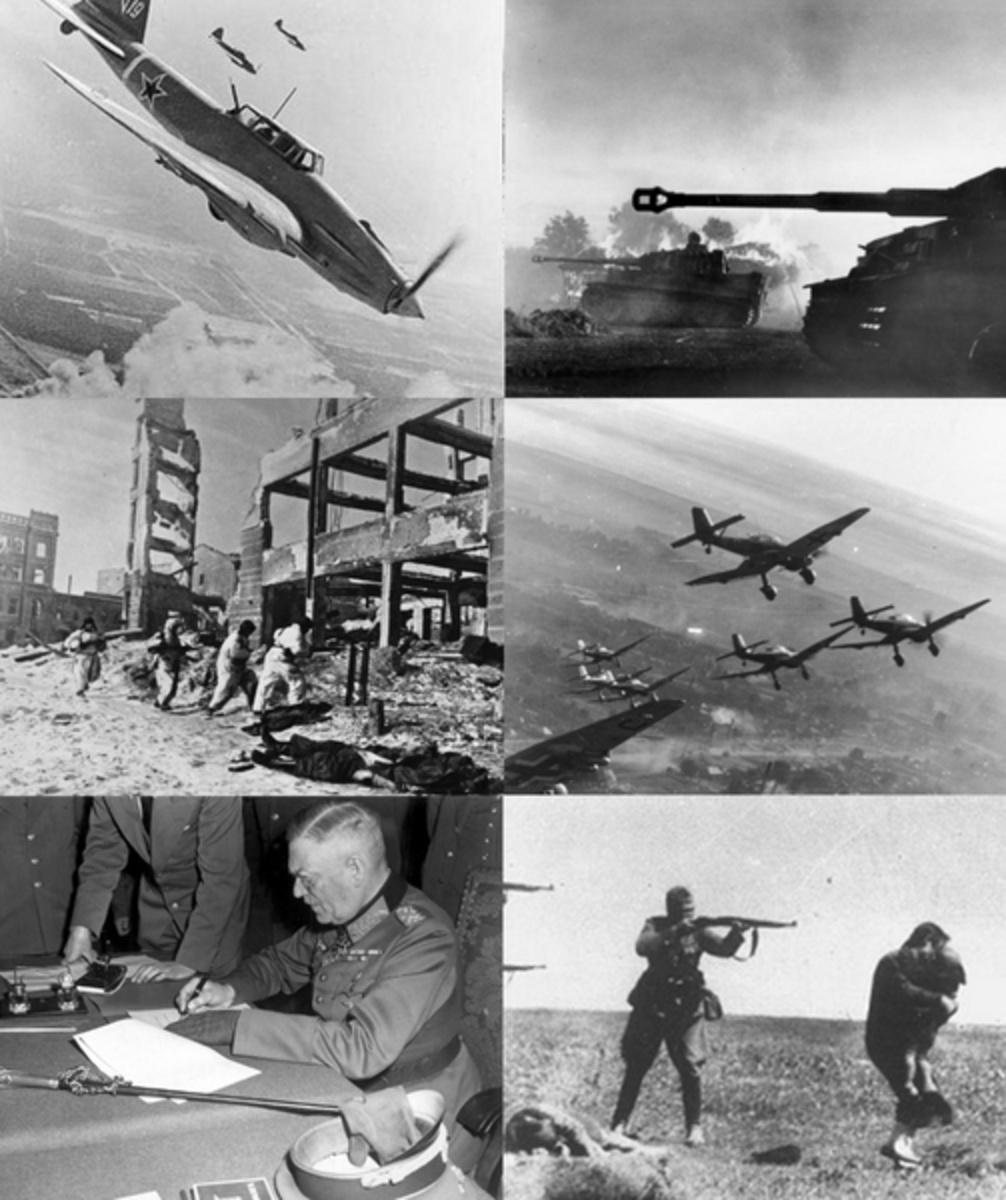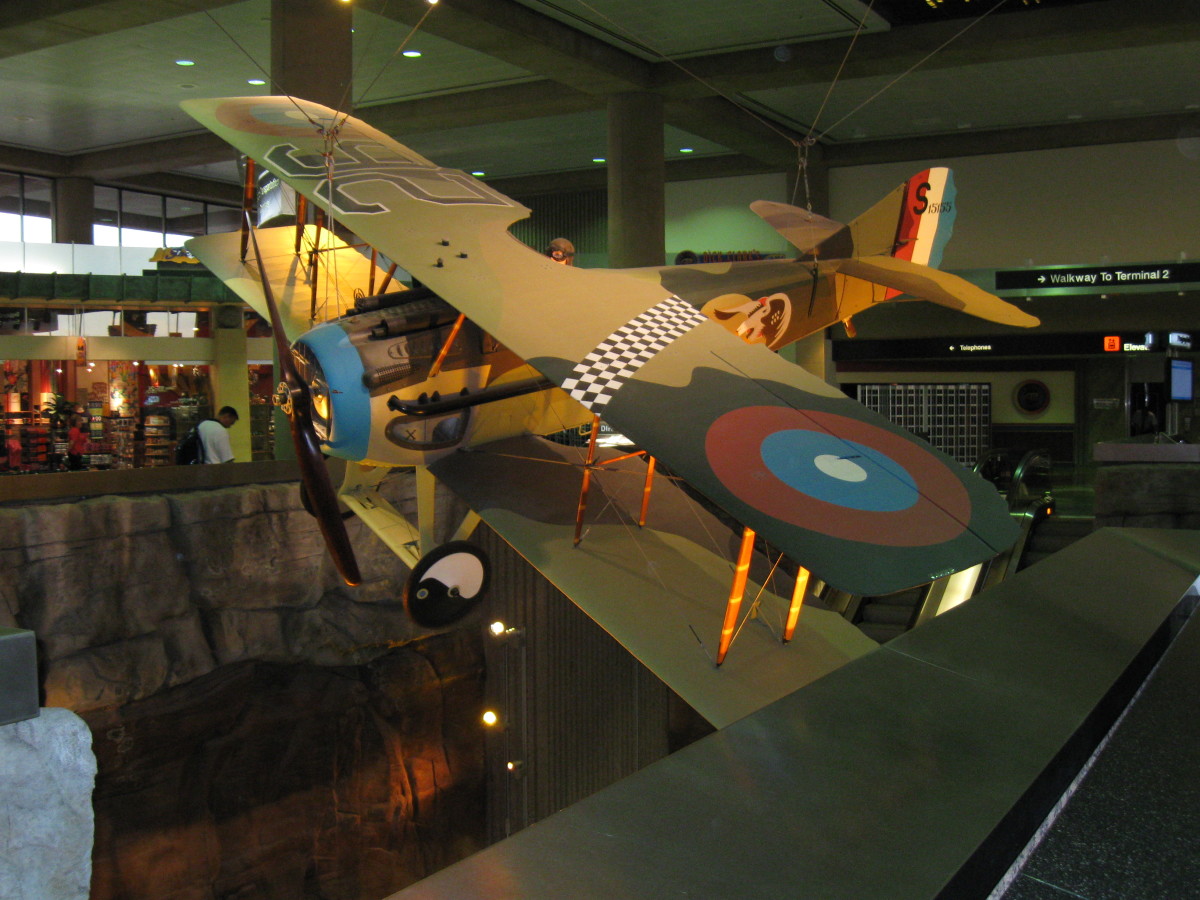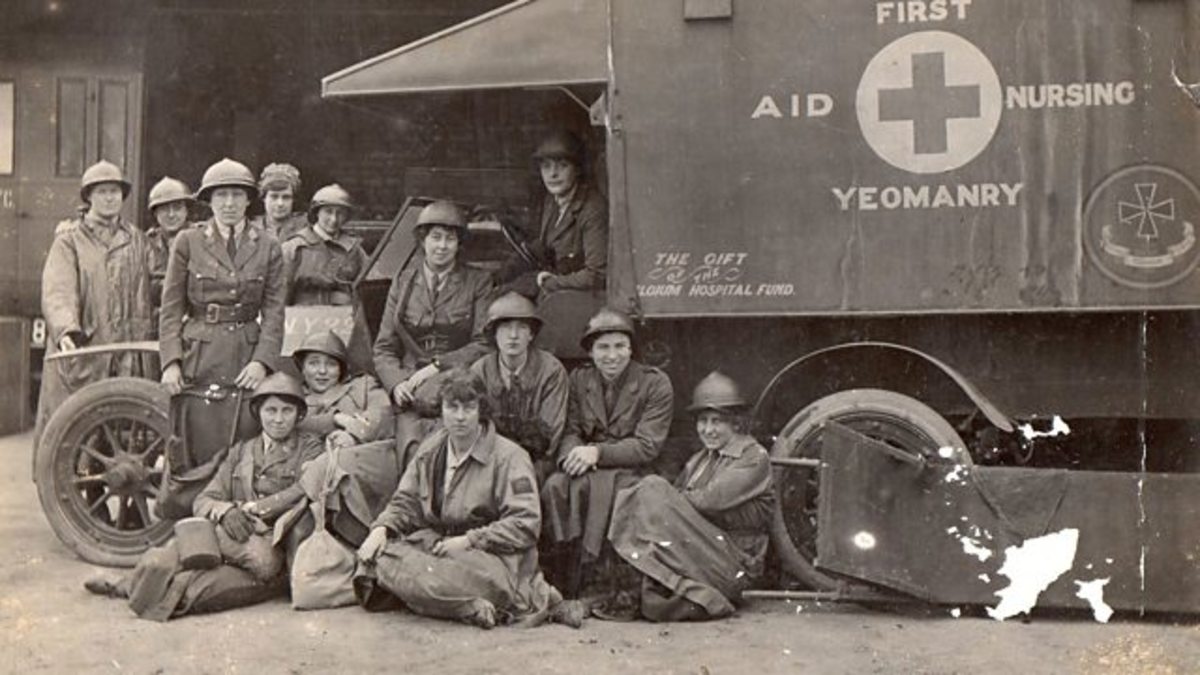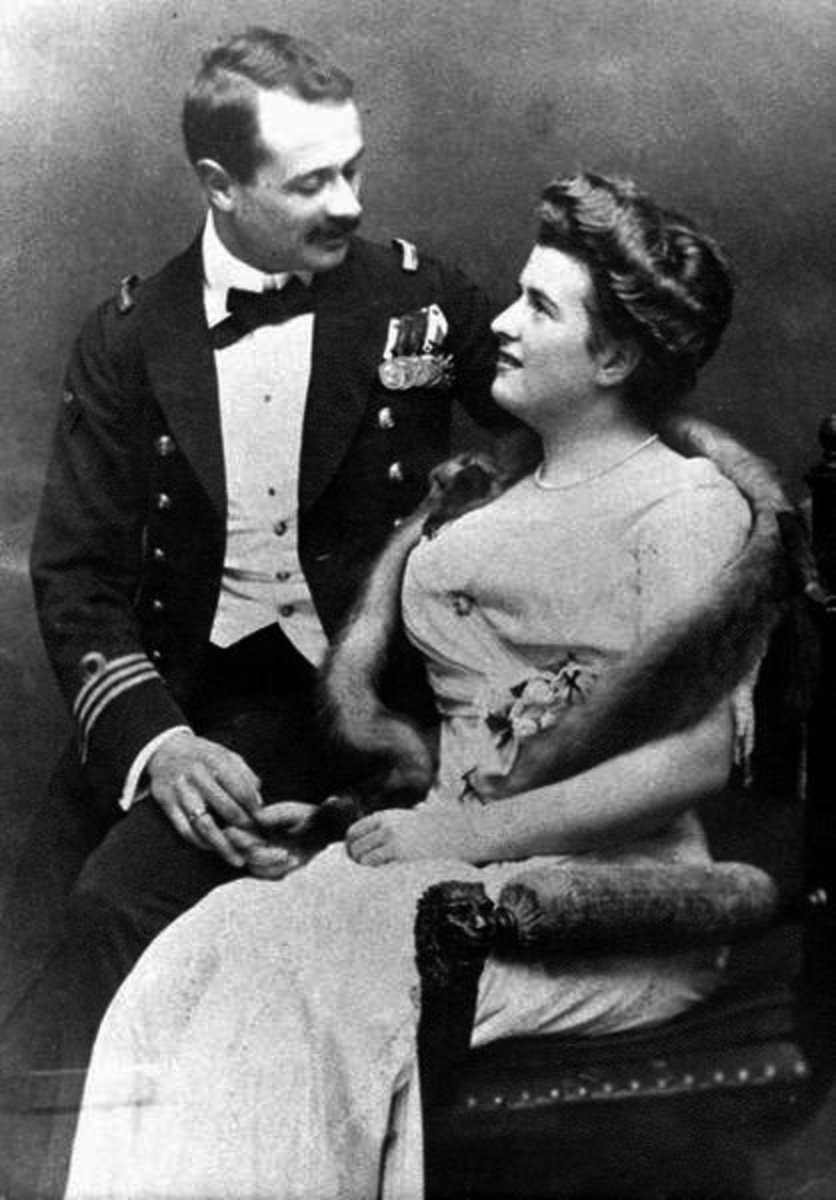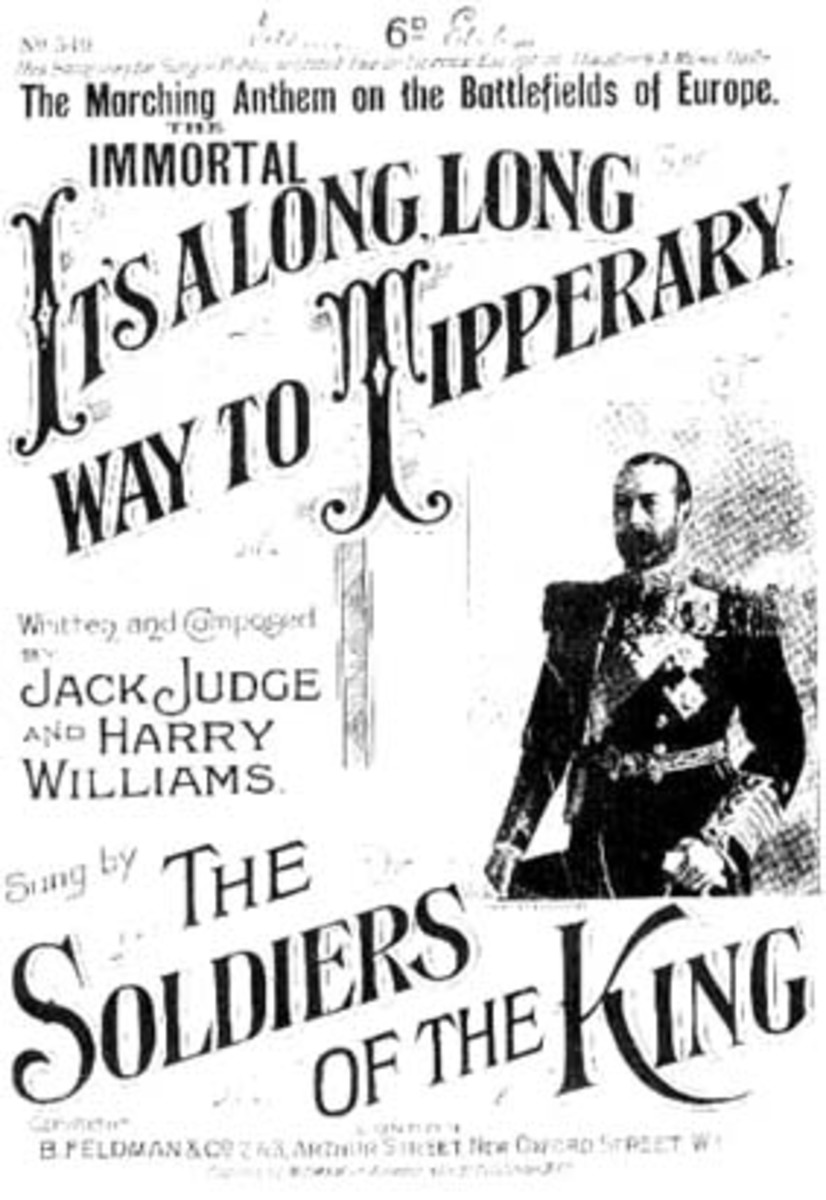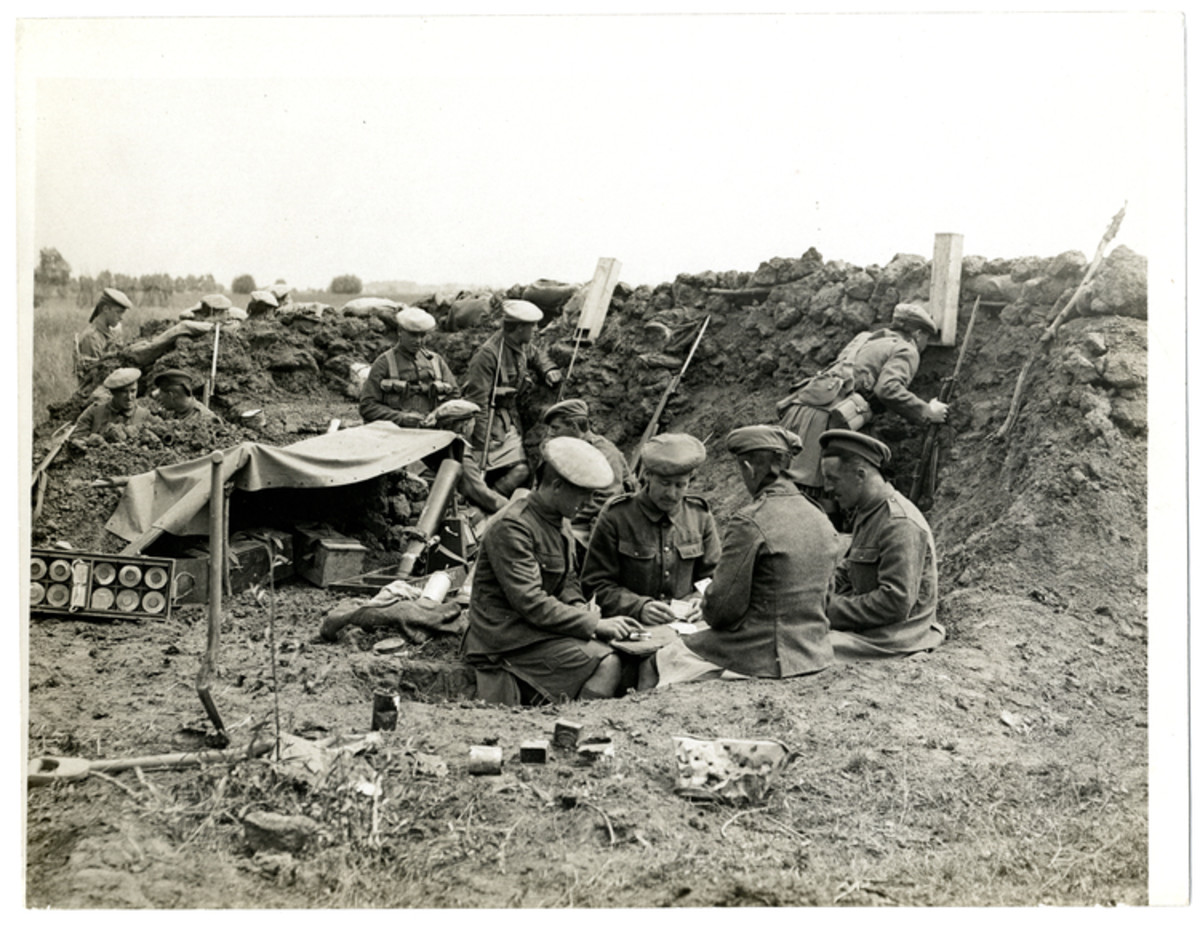- HubPages»
- Education and Science»
- History & Archaeology»
- History of the Modern Era»
- Twentieth Century History»
- World War I
Death of Henry Allingham - Veteran of World War I and Original Member of Britain's RAF
Of 65 Million Who Served in WWI only Four are Alive Today
July 19, 2009
With the death of Henry William Allingham in the early morning hours of July 18, 2009 the number of known surviving veterans of World War I, or the Great War as it is known outside the U.S., has dwindled to four. It is estimated that over 65 million people directly participated in the prosecution of the war in which close to ten million military personnel lost their lives. Large as they are, these numbers do not include the nearly 8 million civilians who died as a result of the war.
At the time of his death, Henry Allingham had lived for 113 years and 42 days making him the oldest living man in the world. He was also the oldest living World War I veteran and currently holds the record as having lived longer than any other known British male in history. Having been born in 1896, Allingham was one of the few to have been alive in the nineteenth, twentieth and twenty-first centuries.
According to press reports, Allingham attributed his longevity to cigarettes, whisky and wild, wild women - which, while not exactly the type of advice given by doctors, seemed to work for him.
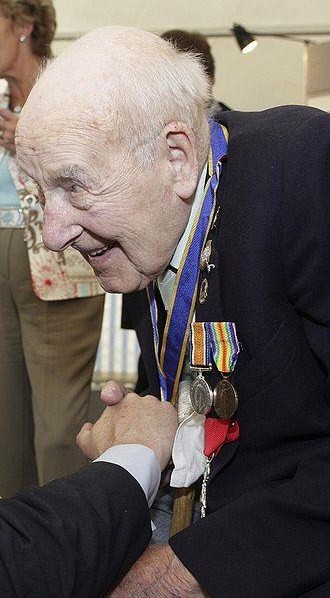
In addition to the four listed above, British Army veteran Douglas Edward Terry also claims to be a veteran of the war but no one has found proof of his service.
One other person appearing on the dwindling WikiPedia page listing World War I veterans still alive today is Józef Kowalski of Poland who joined the Polish Army after the Armistice on November 11, 1918 but before the signing of the Treaty of Versailles on June 28, 1919 (while the Armistice has come to be known as the end of the war, at the time it took effect it was simply a cease fire agreement which both sides expected to be temporary). Kowalski, who still lives in Poland, also fought in the Soviet Polish War (when Stalin and Hitler were allies and invaded Poland together in the early days of World War II) and World War II.
The Four Remaining Veterans
Now, with the death of Henry Allingham, we are down to four men who are known to have served in the military during World War I.
The four lone survivors as of this writing are Henry Patch, who served in the British Army and is a a survivor of the battle of Passchendaele and other action and now lives in England; Claude Stanley Choules who served in the British Royal Navy and now lives in Australia (where he moved in 1926 and then served in the Australian Royal Navy during World War II); Frank Woodruff Buckles who served in the U.S. Army and lives in the United States; and, John Henry Foster Babcock who served in the Canadian Army during World War I and currently resides in Spokane, Washington in the U.S. All except Babcock saw action on the Western Front in Europe. Babcock was assigned to duty in England during the war.
The Canadian Parliament has authorized a state funeral for Babcock when he dies and the U.S. Congress has voted to allow Buckles to be buried in Arlington National Cemetery. The British Parliament has declared that following the death of Patch or Choules, who ever dies last, a National Memorial Service will be held in Westminster Abbey. That service is intended to honor all of Britain's World War I veterans and will be held with the passing of the last veteran.
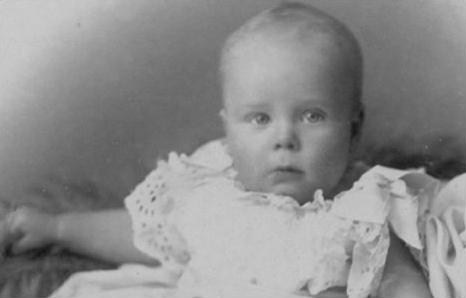
It Was Zeppelins Like These that Bombed Great Yarmouth Base where Allingham was Stationed
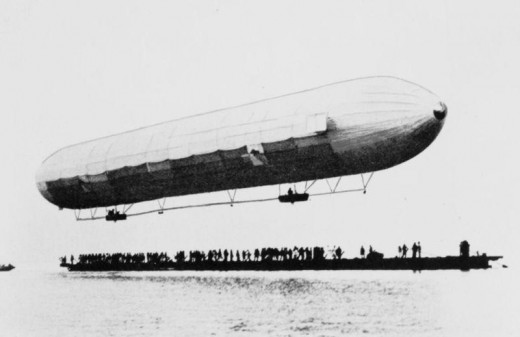
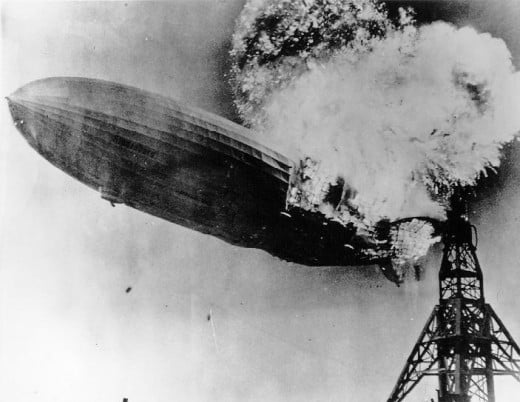
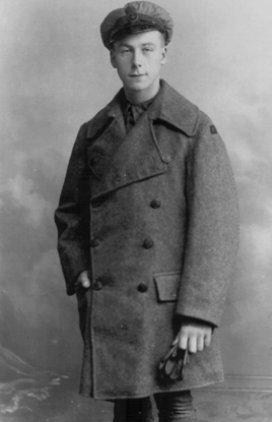
Henry Allingham's Life Began at the End of the Nineteenth Century in 1896
While Henry Allingham achieved fame due to both his longevity and connection to a terrible war that is now fading in the collective memory of the nations which fought in it. He was born into an ordinary family in Clapton, England on June 6, 1896. A little over a year after his birth he lost his father to tuberculosis leaving him to be raised by his mother and grandparents. He appears to have been an only child.
Leaving school at age 15 in 1911 he went to work in a nearby automobile factory. Three years later, in 1914, World War I broke out and, like other young men of that era, and other eras, was eager to join in the fight.
As war fever rose in the summer of 1914 following the assissination of Arch Duke Franz Ferdinand of Austria on June 28, 1914 and the start of the war on the European Continent a month later with Austria's declaration of war against Serbia on July 28th, Henry Allingham was forced to hold back and care for his critically ill Mother. When Britain joined the war on August 4th of 1914 with its declaration of war on Germany, Allingham was still caring for his Mother. But she apparently died soon after Britain's entry into the war and the then eighteen year old Allingham wasted no time in joining Britain's Royal Naval Air Service (RNAS). January 19, 1915 found Allingham stationed at Great Yarmouth in Norfolk England where he experienced the first aerial attack on Britain when a fleet of German Zeppelins bombed Great Yarmouth.
An Average Man Who Faithfully Served King & Country in the Great War
On April 1, 1918 Britain decided to merge the Army's Royal Flying Corps with the Navy's Royal Naval Air Service (RNAS) into a single new branch of the Armed Forces to be known as the Royal Air Force (RAF). Henry Allingham thus became one of the original members of the Royal Air Force and, when he died, was both the oldest surviving member of the original RAF as well as the oldest surviving member of the former RNAS.
Henry Allingham spent the early years of the war stationed on the home front in England providing support to aircraft fighting over and across the Channel. He also served time on board ships operating in the Channel and eventually found himself on the Continent. Of course, was in harm's way as early as January 1915 when the Germans bombed Great Yarmouth in England where he was stationed.
Throughout the war, Henry Allingham was responsible for helping to keep the aircraft in his unit flying and, as such was not directly involved in combat. However, he was close to the front and the planes he worked on participated in the battles of Passchendaele in Belgium, the Somme in France and the Battle of Jutland where he served on board the British ship the HMT Kingfisher which accompanied the British fleet in that battle but was not directly involved in the fight. However, the Kingfisher was close enough to the battle that Allingham and others on board could see the shells as they flew across the water.
While in France during the last part of the war Allingham wounded when he was hit in the arm by a piece of shrapnel during an air attack on the aircraft depot where he was stationed.
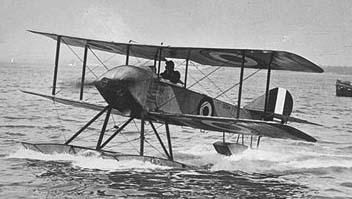
Henry Allingham Gained Fame Because He Outlived Most of His Generation
Today, almost a century after the Great War / World War I was fought, the war has become something to read about in history books and its battlefields have become tourist attractions. With the death of Henry Allingham the world is left with but four men who fought in it and not more than a handful of people who lived at the time of the war. What's more, the children and grandchildern of those who participated in the war and who knew these men and women are aging and dieing.
Following the war Henry Allingham married Dorothy Cater whom he had met at the beginning of the war while stationed at Great Yarmouth. One can get a feel for the vast gulf that separates people living today from those of Allingham's generation from the fact that he survived his wife, who died in 1970, and both of his daughters who died in their eighties. At the time of his death, Henry Allingham's living relatives consisted of 5 grandchildren, 12 great-grandchildren, 14 great-great-grandchildren and one great-great-great-grandchild (all of whom now live in the United States). How many people have been alive to meet their great-grandparents, let alone their great-great or great-great-great-grandparents? How many people even know the names of their great-great or great-great-great-grandparents, let alone have met them in person?
Henry Allingham was not only a link to the Great War/World War I but, in recent years, was also active in speaking to groups, especially school children, and sharing his experiences. On the surface there was nothing remarkable about Henry Allingham's service in the war. Were it not for his longevity he would have been just another one of the 65 million men (and some women) who served in the war and was entitled to have that fact noted on his grave stone. His story would have been told to a few friends and family and eventually forgotten. While he, and most of the 65 million others, were not heroes it was their collective daily work and sacrifices that ultimately led the victory of the Allies in the war.
Falling into a Shell Hole with Rats and Rotting Human Flesh
Henry Allingham was famous because he was a messenger from the past who put a human touch on what is now just accounts in history books. He was a link between that generation who sacrificed so much and present generations who have benefited from those sacrifices. History becomes more real when you get to listen to the unrehersed accounts of those who actually helped make it. An April 18, 2007 BBC article describes Henry Allingham visiting a school and answering thirteen and fourteen year old students' questions about the war. In answer to one question about what it was like in the war he answered by describing how he had fallen into a shell hole one night during a rainstorm and discovered "Dead rats in that shell hole, human flesh, all rotting, who knows what in there...it was terrible,".
This reminded me of one of my trips to Europe back in the 1970s with my sister where we visited the Verdun Battlefield. The battlefield is now a large memorial park with neatly trimmed grass, trees, a military cemetery, monuments and the remains of old forts and fortifications. The park is an area that was the location of two long and bloody battles in World War I and also the site of fighting in World War II (the 1980 movie, The Big Red One, staring Lee Marvin which begins with Marvin's character in a skirmish at Verdun on the last day of World War I and ends with a skirmish on the same battlefield at the end of World War II).
Henry Allingham Remembers the Somme
Visiting the Verdun Battlefield now, one has the feeling of being on sacred ground surrounded by peace. However, when I returned home and showed my pictures to my great-Uncle Walt, who was a World War I veteran and whose unit had arrived at Verdun days after the second battle had ended, he recognized one of the forts.
However, as he described it, it [the battlefield] was a huge area with nothing standing but some of the forts and fortifications. The earth so ripped apart by exploding shells and bombs that not so much as a single blade of grass survived. Scattered around the area were bones and other body parts mixed among the wreckage of buildings and equipment. And, he still remembered the entrance to the fort in the picture, only when he entered there was a partially buried corpse with a skelatel arm and hand protruding upward out of the earth by the door.
With the passing of Henry Allingham, there are only four men left who can share memories of that now distant war with us.
Links to My Other Hubs Dealing With World War I
- Passing of Harry Patch Last British Army Veteran of World War I
On July 25, 2009, exactly a week to the day following the death of British World War I veteran Henry Allingham, Great Britain lost another veteran of World War I with the passing of Harry Patch. The death... - The Zimmerman Telegram
In a recent Hub in his excellent series about World War I, Jimmy the Jock discussed the famous Zimmerman Telegram which was instrumental in getting the U.S. to enter World War I on the side of Britain and... - Christmas in a War Zone - From a World War I Soldier's Diary
The request was for a Hub dealing with Christmas in a war zone. Patty Inglish has already provided an excellent Hub on this topic with her article about the 1914 Christmas Truce during World War I. Unlike... - Mathew B. Juan Native American Hero of World War I
Sitting in the center of the dusty little Arizona town of Sacaton is a small park with a monument to its war dead. Little parks with monuments to those from the town who gave their lives in past wars are not... - The Candle in the Window
From earliest times to the present home has always been more than a simple shelter from the elements. Home also represents family and loved ones as well as a place where its members are always welcome. What... - Veterans Day November 11th
Veteran's Day is a day set aside to honor the veterans of America's wars. It was originally known as Armistice Day to commemorate the official ending of hostilities in World War I - which occurred at the... - The Garden of Gethsemane - A Spiritual Oasis in Tucson
Visitors traveling along Interstate 10 between Atlanta and Los Angeles can obtain a spiritual recharge while passing through Tucson, Arizona, if they pause take the Congress St. west exit off of...
Links to More Information about World War I
- World War 1 1914-1918
Build up to World War 1 There were many factors that led to the outbreak of war in 1914 the causes of the war can be traced back 31 years before the war. Although World war 1 didn't start until 1914 political... - world war 1 The Schlieffen plan
The Schlieffen Plan In 1905, 9 years before the start of World War 1,Alfred Graf Von Schlieffen devised a plan for the invasion of France through Belgium, Holland and Luxemburg. This became known as the... - World War 1 Trench Living
Soldiers fought and Soldiers Died, some lived through World War One, others lived but were disabled for the rest of their lives, everyone who fought in the Trenches and lived had lost close friends or family... - World war 1 A Day in the Trenches
Apart from dodging bullets and avoiding death from enemy shells, there was a daily routine in the trenches of World War 1. It started 1 hour before dawn with the morning "stand to" the men were roused from... - World War 1 The Cost of War
From the first gunshot fired in anger in 1914 until the 11th hour of the 11th day on the 11th month in 1918, The Great War took its toll on human life. Of the 65 million men who fought in World War 1: ... - World War 1 America Declares War on Germany
America was a reluctant to participate in World War 1, infact in august 1914 when the war broke out in Europe; President Woodrow Wilson issued a declaration of neutrality. Preferring to remain isolated... - World War 1 Trench Warfare
The Western Front during World War 1 stretched from the North Sea to the Swiss Frontier with France. Both sides dug themselves in ending any possible chance of a quick war; this caused a stalemate, which was... - World War 1 Christmas in the Trenches
The year is 1914 and World war 1 has been going on for 4 months,soldiers from Germany and Britain, living in mud filled trenches suffering from the cold weather,the chill of the icy rain pouring down on them, - World War 1 Weapons
The German Army (The Axis) In 1914 at the Outbreak of World War 1, the German Army was the strongest in Europe; Germany knew that war was immanent and had been preparing for many years before The Great War... - Royal Naval Air Service - Wikipedia, the free encyclopedia
- BBC NEWS | UK | Distinguished visitor brings WWI to life
When school pupils wrote a series of letters to war veterans, Britain's oldest man Henry Allingham offered to answer their questions face-to-face. - Henry Allingham - Wikipedia, the free encyclopedia
- Timeline - World War One
World War I/ Great War Timeline of Major Events - The long life of Henry Allingham - Telegraph
Henry Allingham, the world's oldest man, has died at the age of 113. Here are some of the key days in his long life. - http://hubpages.com/_fcab/hub/Christmas-in-a-War-Zone
- World War 1 Women At War
Before the outbreak of World War One in 1914 a woman's role in the workplace was quite restricted, jobs for women consisted mainly of domestic labor, nursing, teaching, and agriculture if their family owned...





